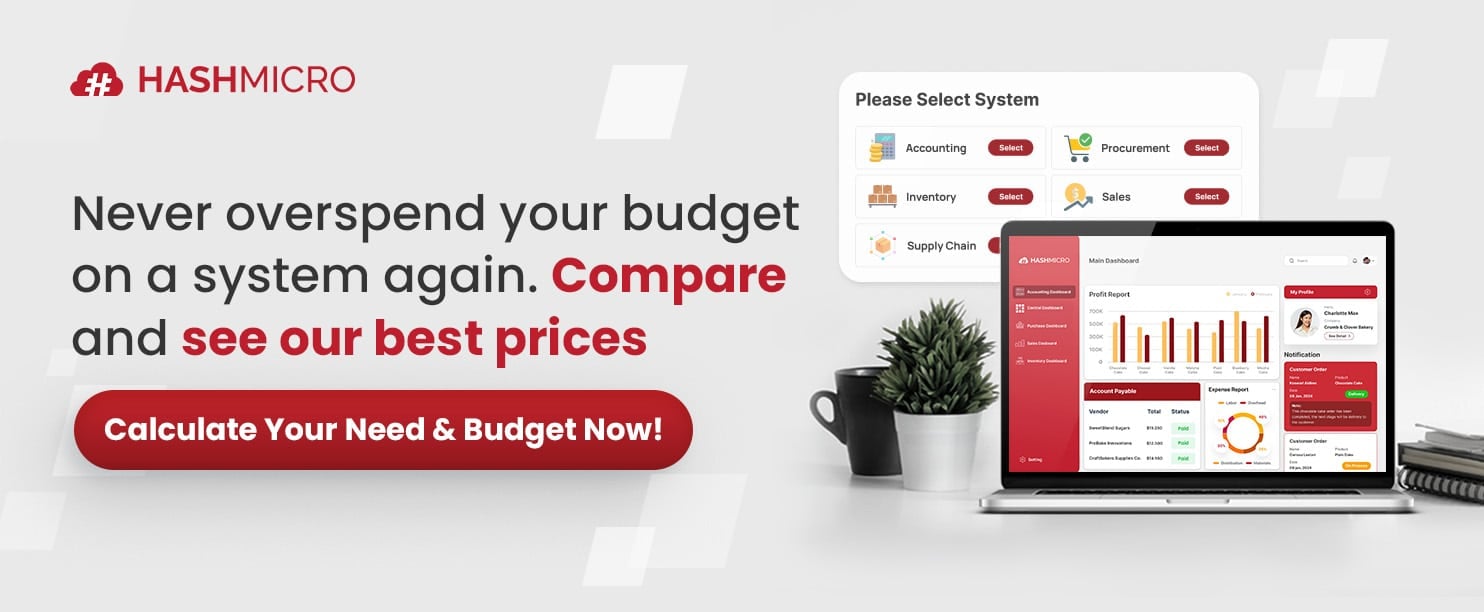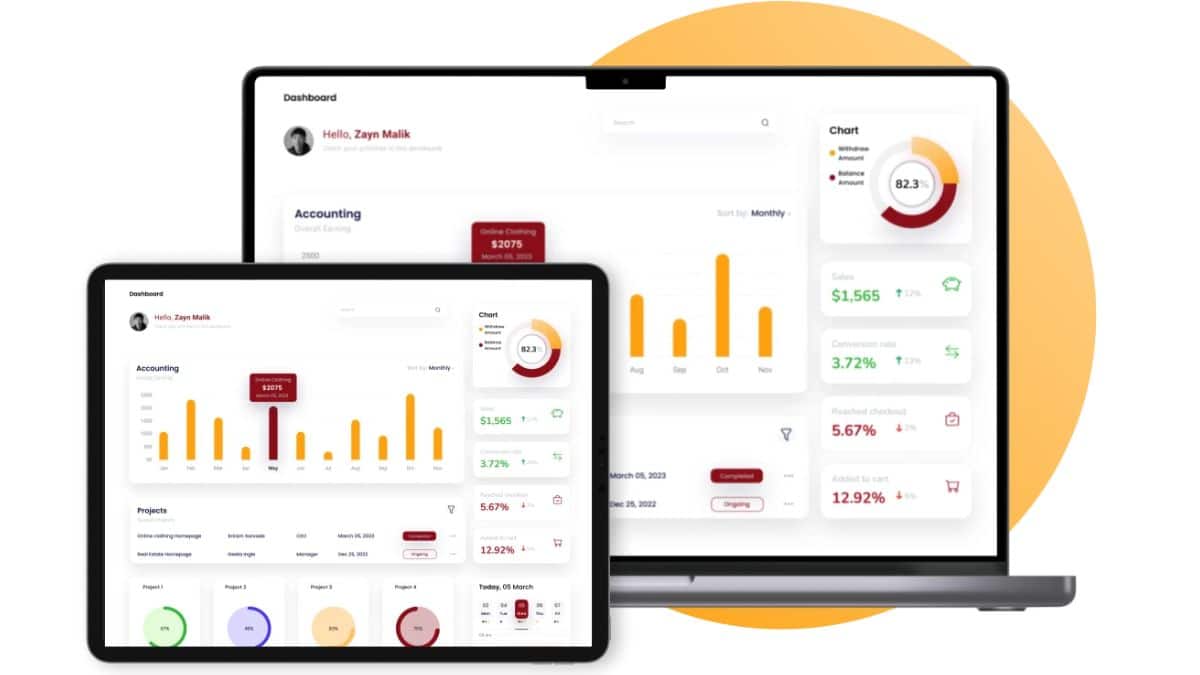What if you could always stay ahead with inventory levels, eliminating unexpected stockouts and overstocking? A perpetual inventory system makes this possible, providing real-time updates, but how do you harness its full potential?
Even with the advantages, businesses often face difficulties with perpetual inventory systems. Common issues include integration problems, inconsistent data updates, and the complexity of maintaining real-time accuracy across multiple channels.
Research from the Ministry of International Trade and Industry (MITI) in Malaysia indicates that companies using perpetual inventory systems have reduced operational inefficiencies by 25%. This highlights the transformative potential of such systems in managing inventory effectively.
If you’re wondering how a perpetual inventory system can benefit your business, continue reading. In this article, we’ll dive into how this system works and the software solutions that can make managing your inventory easier.
Table of Content
Content Lists

Key Takeaways
|
What Is a Perpetual Inventory System?
A perpetual inventory system continuously tracks inventory levels in real-time. Unlike traditional periodic systems that update stock counts at set intervals, this system automatically updates every time a sale, return, or restock occurs, providing businesses with up-to-the-minute data on their stock levels.
For example, if you run an online electronics store, every time a customer buys or returns a smartphone, your perpetual inventory system instantly adjusts the inventory count. This continuous tracking helps prevent issues like stockouts of popular items and overstocking of slow-moving products, reducing unnecessary costs and improving overall efficiency.
The advantages of a perpetual inventory system include minimizing errors, enhancing control over inventory, and allowing businesses to respond swiftly to changes in customer demand. Perpetual inventory software helps companies automate inventory management, ensuring accurate and timely data to make better business decisions.
Perpetual vs. Periodic Inventory Systems

The primary difference between a perpetual inventory system and a periodic one lies in the frequency of updates. In a perpetual inventory system, every transaction, whether a sale, return, or restocking, is updated instantly, providing real-time inventory tracking. In contrast, a periodic system only updates inventory counts at set intervals, typically requiring a physical count.
The advantages of a perpetual inventory system become evident when managing extensive inventories or fast-moving goods. By using perpetual inventory software, businesses can maintain continuous records of transactions, allowing for accurate, up-to-the-minute data and quickly calculating the Cost of Goods Sold (COGS) without waiting for end-of-period counts.
Additionally, a perpetual system enables cycle counting, a method that regularly checks portions of inventory, ensuring better accuracy and fewer errors. Automated inventory control systems make it easier to track and manage stock without the need for manual counts, providing detailed data for effective decision-making.
On the other hand, a periodic inventory system can be less complex but lacks the real-time benefits of a perpetual system. Businesses with low sales volume or more straightforward inventory needs might find periodic systems sufficient. Still, for those looking to improve accuracy and speed, the perpetual approach offers greater control and efficiency in inventory management.
Advantages and Disadvantages of Perpetual Inventory System

Before discussing the specific advantages and disadvantages of a perpetual inventory system, it’s important to understand how it functions and how it differs from other inventory methods. While a perpetual inventory system offers real-time tracking and automated updates, it also has its own set of challenges.
By examining both the benefits and drawbacks, businesses can make an informed decision about whether this system is the right fit for their operations.
Let’s explore the pros and cons in more detail.
Advantages:
- Real-time inventory tracking: A perpetual inventory system offers continuous updates on inventory, providing businesses with real-time data on stock levels. This enables better decision-making by preventing stockouts and allowing for timely reordering to maintain optimal inventory levels.
- Informed forecasting: With perpetual inventory software, businesses can track customer buying patterns and adjust their stocking plans accordingly. This data helps forecast demand more accurately, preventing both overstocking and understocking, which can lead to lost sales or excess costs.
- Multiple-location management: For businesses with multiple locations, a perpetual inventory system simplifies managing inventory across these sites. It allows stock to be transferred between locations seamlessly and ensures that all locations are synchronized, improving overall operational efficiency.
- Ease of financial statement preparation: Since real-time inventory tracking provides up-to-date stock values, preparing financial reports becomes quicker and more accurate. This helps businesses maintain accurate records without the risk of manual calculation errors, saving time during accounting processes.
- Reduction of downtime: A perpetual system eliminates the need for frequent store closures or labor-intensive inventory checks, unlike periodic systems that require physical counts. This helps keep businesses running smoothly without unnecessary interruptions, ensuring continuous operations.

Disadvantages:
- Stock loss: One challenge of a perpetual inventory system is that discrepancies can occur due to theft, damage, or spoilage. These losses may not be apparent until a physical count reveals a mismatch between actual and recorded stock levels.
- Improper inventory tracking: Mistakes such as scanning errors, misplaced products, or software malfunctions can disrupt the accuracy of inventory records. These errors can lead to inefficient tracking and may hamper the overall effectiveness of the automated inventory system.
- Hacking threats: Since perpetual inventory systems rely on digital platforms, there is a risk of hacking and data breaches. Cybersecurity measures must be implemented to protect sensitive data, but these precautions can add significant costs to maintaining the system.
- Cost: The initial setup of a perpetual inventory system can be expensive, especially for smaller businesses. Software, equipment, and training costs can be high, making it a less viable option for companies with limited resources or smaller inventories.
- Need for physical inventory: Although a perpetual system continuously tracks inventory, periodic physical checks are still necessary to ensure complete accuracy. While these checks are reduced in frequency, they cannot be eliminated, and occasional stocktaking is still needed to validate digital records.
How to Use a Perpetual Inventory System

Before diving into the specific steps of using a perpetual inventory system, it’s important to understand how this approach can significantly improve inventory management for businesses. Unlike traditional inventory systems that require periodic updates, a perpetual system provides real-time tracking and automation, ensuring that inventory levels are always accurate.
Let’s explore the key steps to implement and use a perpetual inventory system effectively:
Step 1: Recording sales and purchases
The first step in using a perpetual inventory system involves automatically recording every sale and purchase transaction. When a product is sold or restocked, the system adjusts the inventory levels accordingly, ensuring real-time inventory tracking.
For example, if an online store sells 10 units of a product, the system will reduce the stock count by 10. This continuous process ensures accurate inventory records, allowing businesses to avoid discrepancies and maintain up-to-date stock levels.
Step 2: Updating inventory levels automatically
One key benefit of a perpetual system is its ability to update inventory levels automatically with every transaction. Whether a product is sold, returned, or restocked, the perpetual inventory software updates stock numbers in real time.
This eliminates the need for manual updates and ensures that businesses always have accurate and current data on available inventory. By automating this process, companies can focus on other critical tasks and reduce the risk of human errors.
Step 3: Tracking Cost of Goods Sold (COGS)
A perpetual inventory system also tracks the Cost of Goods Sold (COGS), providing real-time updates on the cost associated with each sale. With each transaction, the system automatically calculates and records the COGS, allowing businesses to monitor profitability accurately.
This real-time tracking ensures that businesses can quickly assess the impact of sales on their financials without waiting for end-of-period calculations. Continuous COGS tracking provides better insights into production costs, helping companies to make more informed pricing and procurement decisions.
Step 4: Automating purchase orders
When inventory levels fall below a predefined threshold, the perpetual system can automatically generate purchase orders to replenish stock. This automated inventory system helps prevent stockouts and ensures that popular products remain available for customers.
Businesses can set specific reorder points within the system to trigger these purchase orders, streamlining the procurement process. By automating this task, companies can save time, improve inventory efficiency, and reduce the likelihood of missed sales due to low stock levels.
Who Uses a Perpetual Inventory System?

Large businesses with vast inventories often rely on a perpetual inventory system to efficiently track stock levels in real-time. This system is ideal for organizations with high sales volumes and multiple locations, allowing for accurate inventory management without the need for frequent physical counts.
Smaller businesses or emerging companies looking to scale also benefit from a perpetual inventory system, as it allows for seamless growth. As inventory needs increase, businesses can easily manage stock levels with perpetual inventory software, ensuring they can meet customer demands while avoiding overstocking or stockouts.
Perpetual inventory systems are especially valuable for industries like drop shipping or trade and distribution, where inventory is constantly moving. With real-time inventory tracking, businesses can stay on top of stock levels and handle returns or exchanges efficiently, making it easier to manage inventory even when products are not physically on-site.
When Would You Use a Perpetual Inventory System?

A perpetual inventory system is ideal for businesses that need to track margins and profitability in real-time. This system allows companies to maintain accurate, up-to-date inventory data, which is essential for informed decision-making and financial reporting.
As technology advances, perpetual inventory systems have become more affordable and accessible to businesses of all sizes. Experts believe that these systems are the future of inventory management, especially for product-based companies, as they offer more efficient tracking with real-time inventory tracking and automated processes.
In a perpetual inventory system, the software records every transaction, updating the sales revenue account with each sale or purchase. This continuous process ensures that accounting records are always accurate and that businesses can maintain proper oversight of their inventory and associated costs, from selling prices to shipping expenses.
Examples of Inventory Valuation Methods in Perpetual Systems

When managing inventory, choosing the proper valuation method is crucial for ensuring accurate financial reporting and maintaining operational efficiency. In a perpetual inventory system, inventory levels are continuously updated with each transaction, and the valuation method determines how the costs of these items are calculated.
Let’s explore three standard inventory valuation methods used in perpetual systems to understand their differences and applications:
1. FIFO (First-In, First-Out) Method
The FIFO method assumes that the first items added to inventory are the first ones sold. This is ideal for industries with perishable goods or items with expiration dates, as it ensures that older stock is sold before newer stock.
By using this method, businesses can prevent the loss of expired products and maintain product freshness. It also provides an accurate reflection of inventory cost as the older, lower-cost items are sold first, leaving newer, higher-cost inventory on hand.
2. LIFO (Last-In, First-Out) Method
The LIFO method assumes that the most recently acquired items are sold first. This method is useful in industries where prices are rising, as it helps businesses report higher Cost of Goods Sold (COGS), thereby reducing taxable income.
While less commonly used, LIFO can be beneficial for businesses looking to minimize tax liabilities in an inflationary market. However, it can also leave older, lower-cost inventory on hand, which may not accurately reflect the actual value of inventory.
3. Weighted Average Cost Method
The Weighted Average Cost Method calculates the average cost of all items in inventory by dividing the total cost of goods available for sale by the total number of units. This method smooths out price fluctuations, providing a fair and consistent valuation of inventory and COGS.
It is ideal for businesses that deal with large quantities of similar products, as it eliminates the complexities of tracking individual item costs. Using this method ensures a balanced approach to inventory valuation, especially for businesses with consistent stock turnover.
Formulas in Perpetual Inventory

Before diving into the specific formulas used in a perpetual inventory system, it’s essential to understand how these calculations help businesses maintain accurate and efficient inventory management.
These formulas provide critical insights into inventory levels, cost of goods sold (COGS), and profitability, allowing businesses to make informed decisions. By leveraging these formulas, companies can optimize their inventory processes, minimize costs, and ensure that financial records remain up to date.
Let’s explore some key formulas that are essential in managing inventory within a perpetual system:
-
Economic Order Quantity (EOQ) Formula
The Economic Order Quantity (EOQ) formula helps businesses calculate the optimal order quantity to minimize both ordering and holding costs. By balancing these two costs, businesses can avoid overstocking or frequent reordering, ensuring efficient inventory management.
The formula is:
EOQ = √(2DS / H)
This formula enables businesses to determine the most cost-effective quantity to order at one time, leading to better inventory control and cost management.
-
Cost of Goods Sold (COGS) Formula
The COGS formula calculates the direct expenses associated with the production of goods sold during a period. In a perpetual inventory system, COGS is updated continuously, ensuring that financial records reflect accurate data after each transaction.
The formula for COGS is:
COGS = Beginning Inventory + Purchases – Ending Inventory
This allows businesses to track the cost of producing and selling products, enabling them to adjust pricing strategies and evaluate profitability more effectively.
-
Gross Profit Formula
Gross Profit is the difference between a business’s revenue and the cost of goods sold (COGS). It provides insights into the profitability of a company’s core activities, excluding operational costs like marketing and administration.
The formula for gross profit is:
Gross Profit = Revenue – COGS
By calculating gross profit, businesses can assess whether their pricing and production strategies are generating sufficient returns to cover their other expenses and generate profit.
-
Ledger to Calculate Gross Profit
In a perpetual inventory system, the Gross Profit Method allows businesses to estimate ending inventory when direct physical counting isn’t possible. By using the gross profit percentage of sales, along with the beginning inventory and purchases, businesses can estimate their ending inventory and the associated cost of goods sold.
This method helps ensure accuracy in financial reporting, especially during financial periods with stock discrepancies or losses.
Using these formulas allows businesses to refine their inventory processes, improve financial management, and ensure accurate inventory report generation in a perpetual inventory system. If the calculations seem complex, perpetual inventory software can help automate these tasks and simplify inventory management.
How HashMicro’s Inventory Management Software Simplifies Your Business

HashMicro offers a comprehensive inventory management software solution designed to help businesses efficiently manage their perpetual inventory system. A standout feature is the automation of stock tracking and real-time updates, ensuring that every aspect of your inventory is accurately monitored and managed with ease.
Experience the power of HashMicro’s inventory management software. Discover how automation simplifies perpetual inventory tracking, enhances inventory visibility, and ensures timely updates, minimizing stock discrepancies and maximizing operational efficiency.
Why choose HashMicro? Our software automates crucial perpetual inventory tasks, such as tracking stock levels, managing purchases, and updating inventory records, improving overall operational efficiency. Its seamless integration with other business management modules provides a unified solution for businesses looking to streamline their inventory management processes.
Below are some of the key features of HashMicro’s inventory management software for perpetual inventory systems:
- RFID Warehouse Rack Stock Automation: This system automates the tracking of stock in and out of warehouse racks using RFID technology, ensuring real-time updates and minimizing manual tracking errors.
- Fast-moving and Slow-Moving Stock Analysis: This feature analyzes stock movement to help businesses identify fast-moving and slow-moving items, allowing them to optimize stock levels and prevent overstocking or stockouts.
- Stock Forecasting & Run Rate Reordering Rules: It uses historical data to predict future stock needs and automatically sets reordering thresholds, ensuring inventory levels remain balanced and preventing stock shortages.
- Stock Reservations & Reporting: This feature enables businesses to reserve inventory in advance and generates detailed reports to ensure the availability of necessary stock when required, improving workflow efficiency.
- Quality Control Management: It integrates quality control processes into inventory management, ensuring that only products meeting quality standards remain in stock and are available for use or sale.
- Product Expiry & Warranty Tracking with Reminders: This feature tracks expiry dates and warranties, sends reminders to prevent the selling or use of expired items, and reduces financial losses from expired stock.
- Consignment Stock Management: By managing consignment stock, businesses can track and replenish stock provided by suppliers, ensuring accurate and timely management of these inventory items.
- Stock Take and Inventory Adjustment Management: It simplifies stock taking and inventory adjustments by providing a system to update stock data regularly, reducing discrepancies and ensuring accurate inventory records.
- Integrated Barcode & QR Code Support: This feature streamlines inventory tracking by using barcode and QR code scanning, enabling quick and accurate management and reducing human errors in stock recording.
- Material Request Management: It enables businesses to manage material requests efficiently, ensuring that the required materials are available at the right time and preventing operations delays.
These capabilities improve inventory accuracy, reduce stockouts, and optimize stock levels. With HashMicro’s software, businesses can enhance their inventory management, improve data accuracy, and ensure a smooth and efficient flow of operations.
Conclusion
A Perpetual Inventory System (PIS) is a crucial tool that continuously tracks inventory levels in real time, ensuring businesses always have accurate data on stock quantities. By automating this process, companies can reduce errors, prevent stockouts or overstocking, and improve overall operational efficiency.
HashMicro’s Inventory Software is one of the best solutions available for implementing a Perpetual Inventory System. It offers a comprehensive suite of tools that simplify inventory tracking, automate stock updates, and provide real-time insights, helping businesses streamline their inventory management.
Ready to take control of your inventory? Sign up for a free demo of HashMicro’s Inventory Software today and see how our solution can optimize your inventory management, save time, and boost your business efficiency.































